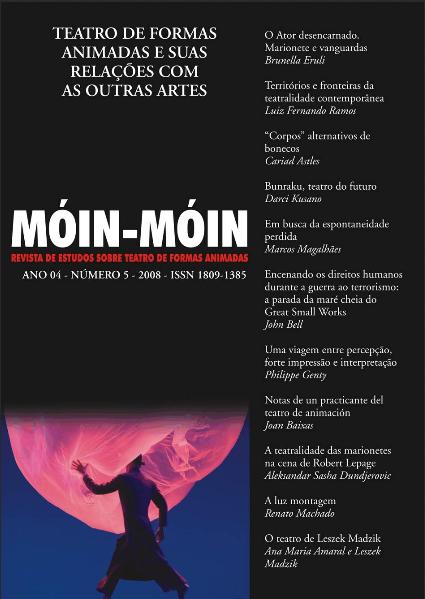O Teatro de Leszek Madzik
DOI:
https://doi.org/10.5965/2595034701052008207Abstract
O teatro Scena Plastyczna – K.U.L. (Katoliekiego Universytetu Lubelskiego) foi criado por Leszek Madzik no início dos anos 70,
um período de grande entusiasmo artístico na Polônia, quando começaram a surgir grandes produções e diretores, Kantor e Grotowski,
entre outros. A Universidade Católica de Lublin, fundada em 1918, sempre teve atuação importante na vida cultural e artística do país, e com Leszek Madzik assume hoje papel de mecenato no que se refere ao teatro visual. Por intermédio dela, Leszek Madzik pode tranqüilamente
criar e experimentar, sem as preocupações próprias de um teatro profissional. Ele não trabalha só com atores, mas com estudantes de várias áreas. Suas oficinas têm a duração de um ano, terminando sempre com espetáculos, experimentais. Entre as primeiras apresentações
assinalamos: Ecce Homo, seu primeiro sucesso (1970) e a seguir Notividade (1971); A Cena, (1972); Ícarus (1974); Herbarium (1976); Caminhando (1980); Litoral (1983); A Porta (1989/90); Kir (1997). O teatro visual de Lublin, que a princípio restringia as suas apresentações aos palcos da universidade, foi alcançando outras platéias e hoje tem um renome e uma atuação internacional.
Downloads
Downloads
Published
How to Cite
Issue
Section
License
The readers are free to transfer, print and use the articles published in the Magazine, as long as there’s explicit mention to the author(s) and to Móin-Móin Magazine - Studies in Theater of Animated Forms and there are no changes on the original work. Any other use of the texts needs to be approved by the author(s) and the Magazine. In submitting an article to Móin-Móin Magazine - Studies in Theater of Animated Forms and have it approved, the author(s) agree to give away, without payments, the following rights to the Magazine: first publishing rights and the license for the Magazine to redistribute this article and its metadata to index and reference services that the editors consider appropriate.
The articles whose author(s) are identified represent the author’s point of view and not the official position of Móin-Móin Magazine. The author(s) commit to always mention the publication in the following way when publishing work in reference to the article published in Móin-Móin Magazine:
“This article was originally published by Móin-Móin Magazine volume (insert the volume), number (insert the number), in the year of (insert year) and can be accessed on: http://www.revistas.udesc.br/index.php/móin"
Plagiarism in any way constitutes an unethical publishing behavior and is unacceptable. Móin-Móin Magazine holds the right to use software or other plagiarism tracking methods to scan the submitted works.
![]()
This journal uses Attribution-NonCommercial 4.0 International– (CC BY NC 4.0).






